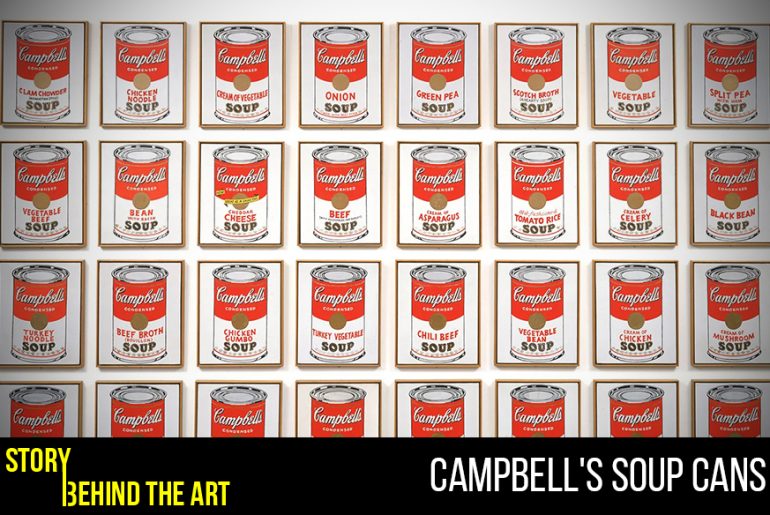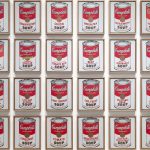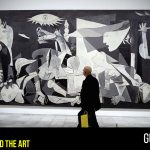On the fourth floor of the MoMA lies a work of art representing American Pop Art: Campbell’s Soup Cans by acclaimed Pop Artist Andy Warhol. This piece represented American consumerism and was among the few paintings that pioneered American Pop Art- a modern art movement in the late 20th century. The piece is composed of a series of canvases displaying repetitive images of different flavours of Campbell’s Soup Cans.

What is pop art? | Campbell’s Soup Cans
Pop art was an art movement of the late 20th century. It was inspired by commercial and popular culture themes. While it lacked a specific style, it was defined by diverse responses to the post-war era’s commodity-driven values, often using commonplace objects (such as comic strips, soup cans, road signs, and hamburgers) as subject matter or as part of the work (The Editors of Encyclopedia Britannica, 2022).
Famous Pop artists include works like ‘Whaam’ by Roy Lichtenstein and Richard Hamilton’s ‘Just what is it that makes today’s homes so different, so appealing?’ among Andy Warhol’s many print works.

The Artist: Andy Warhol
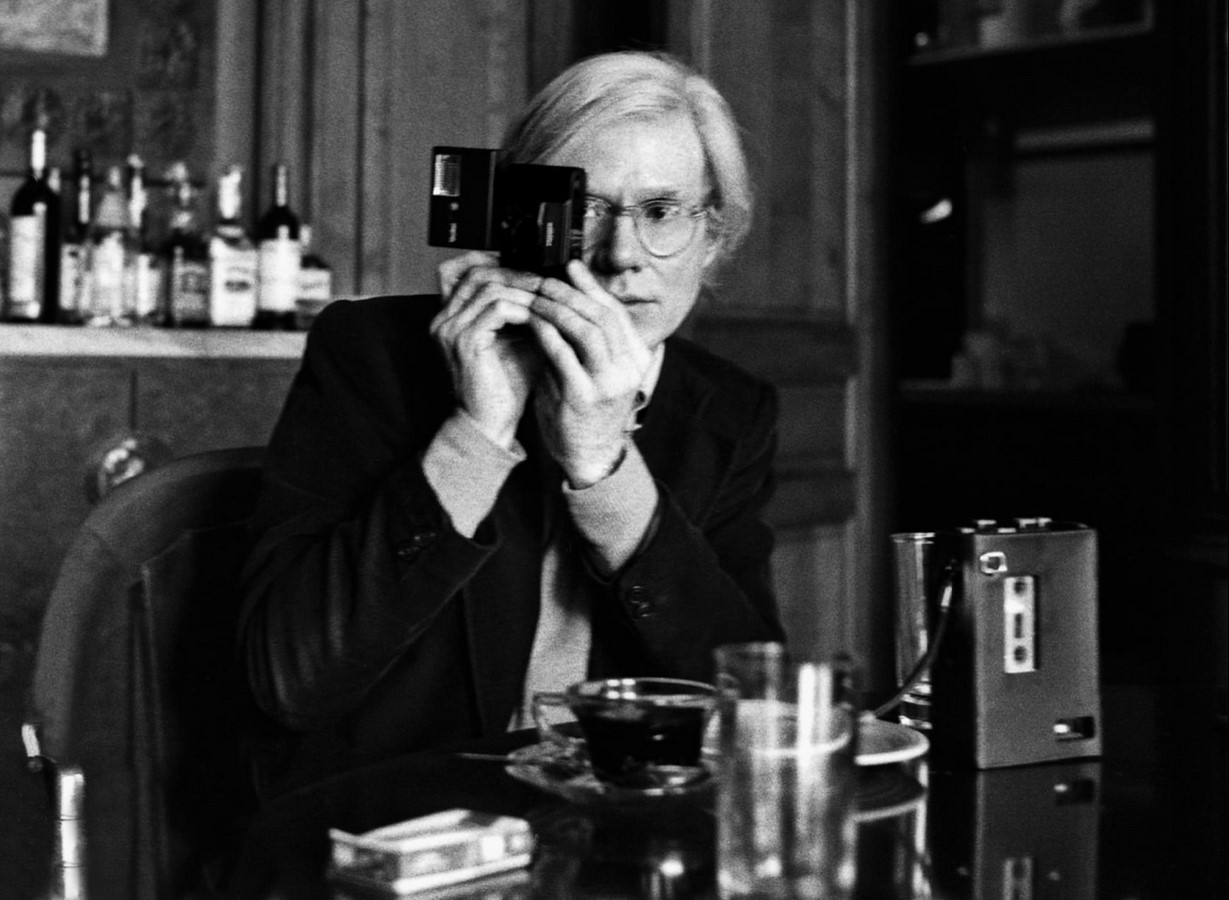
Andy Warhol started his career as a commercial illustrator in America’s Pittsburg. Later, he gained fame as a fine artist, author, publisher, painter, and film director. As an artist, his first solo art exhibition was on July 9, 1962, in the Ferus Gallery in Los Angeles, California. During his career, Warhol pioneered the development of a printmaking process. It used an “enlarged photographic image transferred to a silk screen that is then placed on a canvas and inked from the back” (Andy Warhol Campbell’s Soup, 1968, no date). This technique enabled the Artist to create repetitive images: themes and paintings that he believed in those represented mass production, American consumerism, and the state of the postindustrial, machine-driven world.
These iconic Warhol prints, depicting items such as soup cans, dollar bills, and celebrity faces, are described by critics as the Artist’s comments on the “banality, harshness, and ambiguity of American Culture”. Like the items he drew inspiration from, the Artist posed himself as a machine with a plastic, image-driven and devoid of a “narrative sense” persona (Miller, 2012). He called his studio the ‘Factory’ where he used an ‘assembly line’ technique for repetitive imagery creation., and his very persona seemed designed as a product for public consumption: plastic, image-driven, devoid of a “narrative sense.”
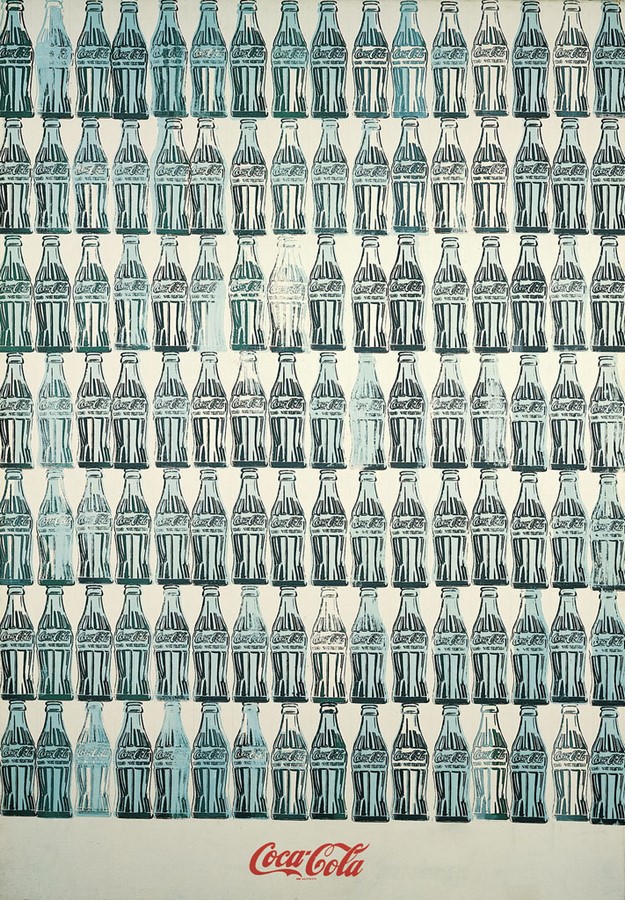
Inspiration for the work | Campbell’s Soup Cans
Warhol himself once described Pop Art as “liking things.” To develop his own niche in paintings, Andy’s friends suggested he paint commonplace objects people tend to overlook. Thus, the Artist started with his favourite soup brand, Campbell’s, to do the same. This idea worked wonders for Warhol and was the starting point of an exponential career in fine arts.
He described the inspiration behind his painting to be as commonplace as, “I used to drink it. I used to have the same lunch every day, for twenty years … the same thing repeatedly.”. This sense of repetition was internalized by the Artist. He described himself as a machine, with nothingness as the defining theme of his existence. He made statements like “If you want to know all about Andy Warhol, just look at the surface of my paintings and films and me, and there I am. There’s nothing behind it.” to embody the machinelike nothingness he claimed to be to manufacture his repetitive paintings.
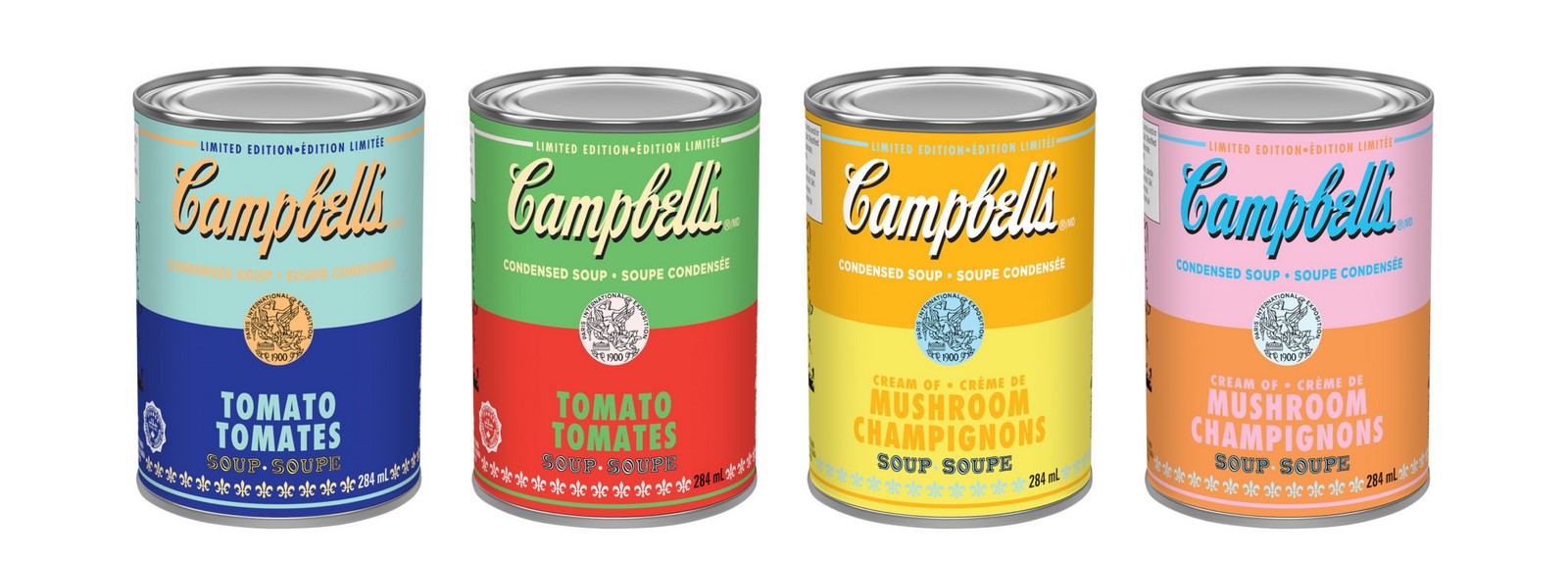
Details of the work
“32 Campbell’s Soup Cans” is an artwork composed of thirty-two screen canvases, each painted with a single can of Campbell’s Soup Cans. Each of the thirty-two canvases, 20″ x 16″ in size, had various flavours sold at the time of painting (1962). Initially, they were displayed linearly mounted on a shelf as if to convey the monotony of the grocery shopping experience (Miller, 2012). Though they appeared identical to grocery items on a shelving rack, the Artist’s handiwork is evident through the variations in texts and in the hand-stamped items at the bottom of each painted can. “This juxtaposition between pure replication and human error makes the series more intriguing” (Andy Warhol Campbell’s Soup, 1968, no date).
Popularity | Campbell’s Soup Cans
Today, the artwork’s popularity and price have skyrocketed, considering that it was one of the pioneering works of American Pop Art and that of Andy Warhol’s Fine Arts Career. A single canvas version (of Campbell’s Soup Can (Tomato) sold through Christie’s Auction house in 2010 for over $9 million. People flock to the MoMA to see and study Warhol’s work, especially Campbell’s Soup Cans. They are now displayed in a set of 4 rows of 8 canvases vs their original linear arrangement.
For viewers today, the artwork evokes a sense of nostalgia. Each print, with its slight lettering variations, manual finishing details and minor human error, makes them appear touchingly handmade. In today’s world, where high-tech media and marketing used highly saturated, airbrushed media and marketing imagery, it is ironic to imagine that in the 60s, Warhol’s now ubiquitous art was criticized as sterile, cold, and mechanical.
References:
Andy Warhol Campbell’s Soup, 1968 (no date) MasterWorkers Fine Art Gallery.
Miller, B. (2012) Andy Warhol’s Campbell’s Soup Cans, 1962, origins.osu.edu. Available at: https://origins.osu.edu/milestones/november-2012-andy-warhol-s-campbell-s-soup-cans-1962?language_content_entity=en.
The Editors of Encyclopedia Britannica (2022) ‘Pop art | Characteristics, Definition, Style, Movement, Types, Artists, Paintings, Prints, Examples, Lichtenstein, & Facts | Britannica’, Britannica. Available at: https://www.britannica.com/art/Pop-art (Accessed: 20 November 2022).


